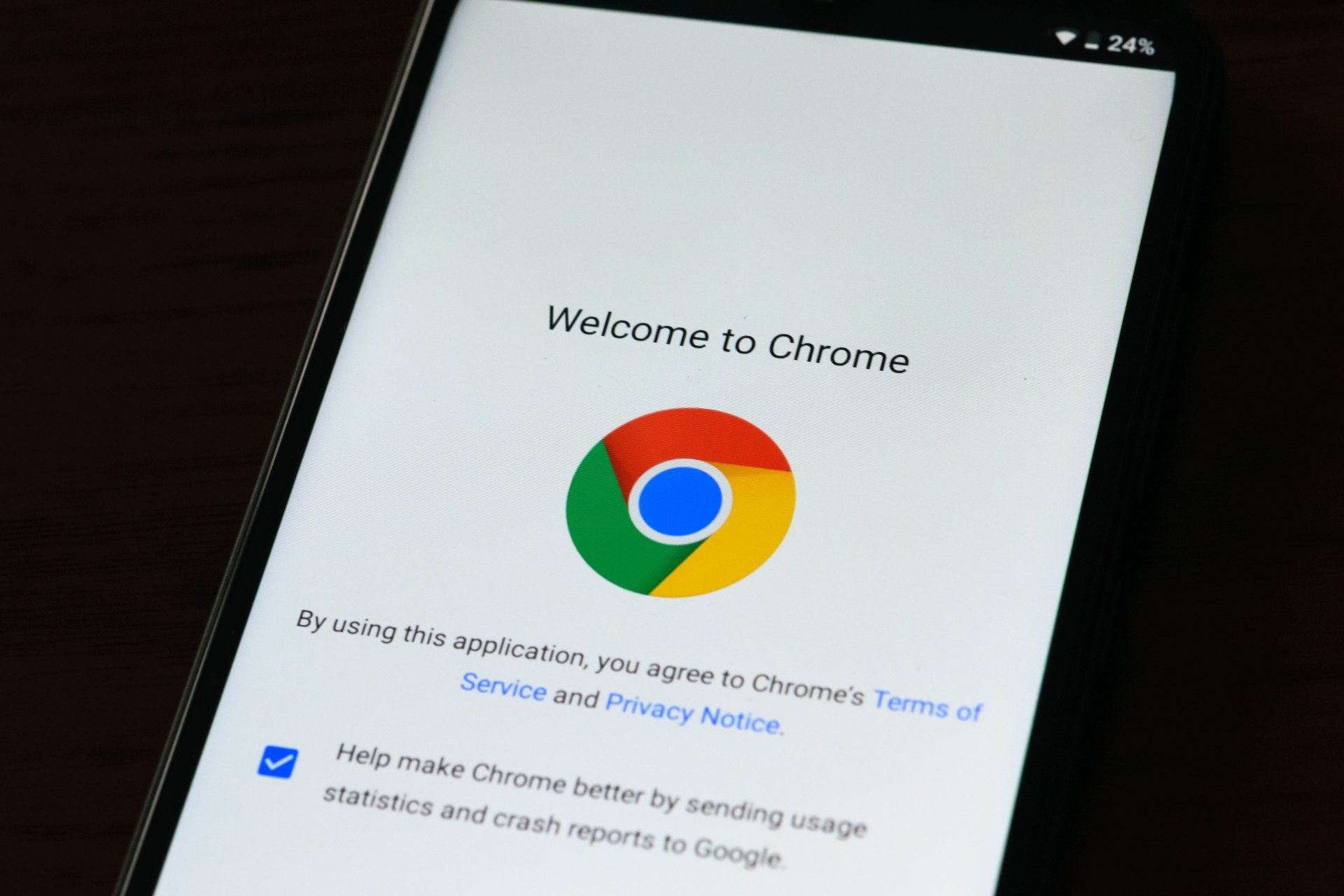How To Format A Blog Post
Jenny Marsden --March 23, 2021
How To Write A Great Blog POst
Websites are not a "build it and they will come" type situation. There are something like 7 Billion indexed web pages as at December 2020.
7 Billion!
That's a big number. Many of these websites are business websites, online stores or membership websites, but what do they all have in common? They make use of blogs to get clients to their website. If they aren't doing that, they should be.
Google is a business like any other business and they won't be in business for long if they don't showcase the very best results to their clients. With this in mind, writing a great blog post is a skill you should learn. It is a challenge to begin with but the more you do the better you get and nothing you post is set in stone! In a years time there is nothing stopping you going back to those year old posts and improving them. That often counts as much as creating new posts.
Clawing your way to the top of the SERP's (search results) is hard. Actually it's VERY HARD! Here's some tips to help you along the way.
Google is a business like any other business and they won't be in business for long if they don't showcase the very best results to their clients. With this in mind, writing a great blog post is a skill you should learn. It is a challenge to begin with but the more you do the better you get and nothing you post is set in stone! In a years time there is nothing stopping you going back to those year old posts and improving them. That often counts as much as creating new posts.
Clawing your way to the top of the SERP's (search results) is hard. Actually it's VERY HARD! Here's some tips to help you along the way.
Step 1 - What should you write your blog post about?
Let me start by saying that the very first step to assembling a blog post is drilling down to what the post is actually about. Being specific is everything in writing articles or posts. Consider this: As a travel blogger, I might have just come back from Turkey. Writing a post about "How Amazing Turkey Is" is way too generic to ever be found. I would be competing against Trip Advisor and Booking.com and Expedia and will never be found. While that level of competition might seem standard for a subject like travel, it can be said for almost any niche. If you are a physiotherapist, how do you stand out against WebMD, or if you are a local builder how do you compete against the huge regional home builders? You have to choose your subject matter carefully and specifically. Here is some steps you can take to help. You need to drill down on your subject matter and drill down deep. While 3000 words is a great post length, that is a complete waste of your time if no-one ever finds it. 1300 words on a more specific topic has way more chance of being found. So think about not just your subject matter, but
- what you are actually doing,
- what you are hoping to achieve (sign ups, sales or just encouraging clients to stay, or
- what you are going to teach your readers.
Did you know that aproximately 75% of users never go past the first page of Google?

STEP 2 - CONFIRM YOUR SUBJECT MATTER
I know it felt like you were done with that subject didn't it? You almost are, however you still have to check to see what other posts are out there that talk about the same thing. This step is essential, not to copy anything from another website (never do that!), but to see exactly what their post is offering. You have to remember that Google is all about user experience and relevance, so before you start writing your article it makes sense to check who you are competing against and how your post could be slightly better than theirs.
What are you checking for?
Open the first 3 non-paid posts in the search results. So nothing that's an ad, only the posts that rank in the top 3-5 organic positions. Have a quick scroll through their post and see what they are offering.- Do they have clear headings?
- Is their text well-spaced and easy to read?
- Do they have good images?
- Do they use tables to display data?
- Do they have a video?
- include more information,
- have better images (and make sure you add ALT tags to your images - how to here ),
- have a better post layout - in this case, step by step instructions,
- add in a table with approximate ride times in different conditions that you may be able to do before having to change your filter (its the data that will help) or
- record a video of you taking the action, upload it to YouTube (for a second bite of the apple) and then include it at the bottom of your post.
Step 3 - Creating Sub Sections
Now you have your subject matter, you need to look at segmenting the post for your readers.
Segmenting breaks up the content so your visitors can read it easier and it also enables us to create headings to show Google our relevance to the search.
You have your post title, "How to change the oil filter on a 2020 Yamaha WR 450", now we have to create some subheadings.
These might be:
- What tools you will need to change the oil filter on your WR450
- How to drain the oil from your WR450
- How to dispose of a used dirt bike oil filter
- Refilling the oil in your 2021 Yamaha dirt bike
- How to get to Turkey from Australia,
- How to get around Istanbul on public transport,
- Is Istanbul safe to travel at night
- What does a restaurant meal cost in Istanbul
- How to get from the airport into the city in Istanbul
Ordering your blog post sections
Now you have your headings, arrange them in an order that will make sense for the post. If it is a How-To post this will be simple, however, if it is a travel post it might be more challenging. Step back and think about the process that has to happen for your post to make sense.- You have to get to turkey
- You have to get to and from the airport
- You have to have some accommodation
- You have to know if you are safe to walk around at night etc.
Try to always write your post in a word processor like Word or Google Docs. You need to check spelling, formatting and layout prior to posting and the easiest way to do this is via a wordprocesser.
Step 4 - Assembling Your Post
Write your intro
Firstly write a two to three sentence introduction. Tell your visitor what the post is about and what they will get out of it by the end.
IE: We are going to show you how to change the oil filter on your 2020 Yamaha WR450 dirt bike. You will learn the proceedure to take to drain the oil, change the filter, replace the oil and test in 4 easy to follow steps.
If you have it, add a good quality image here. In this instance I would insert an image of the dirt bike we are speaking of. You have now reinforced to the reader that this is where they need to be with both text and images.
Fill out your sub headings
Now you need to break into each sub heading and write out the content appropriate for each heading.
- Try not to have more than 2 large paragraphs without a break. A break can be just a bulleted list or a feature piece of text or even a new sub heading.
- Write for your readers NOT for Google - we will get into optimising your post later.
- Consider splitting your post into columns if it supports the layout. IE in this case an image on the left showing each step as you describe it on the right would work well.
Step 5 - Summarise Your Post
Once you have completed the content for all your subheadings, you will need to summarise and finish off your post.
A good summary might reiterate what they've learned, point them to more posts that might help them or even give them a chance to share your post via social media. Don't be too salesy with you summary though. Sure, if you can show them where to purchase a new oil filter that would be great but don't make it the only feature of your summary.

Step 6 - Getting Ranked by the search engines
OK this is where you are going to yell at me! On average it takes 8-10 months for a blog post to rank. I know that is brutal but that's just how long it takes. Don't be discouraged by this, everyone else is in exactly the same boat.
Some posts that are time relative (the 2021 dirt bike post for example) can rank quicker, however you need to be sure that date is always going to be relevant. The best SEO tips for 2021 will have no value at all in 2022 but people are always going to be looking for posts about a product that was manufactured in 2021 - like the dirt bike. So just make sure if you have a year in your title, it is always going to be relevant to the post.
A Few Tips
Searching for topics and keywords
Before you start searching for your topic and/or keywords make sure you are signed out of any Google account and clear your cookies and search history on whatever browser you are using. If you don't, Google will take into account what you've been searching for and cater the results to your past searches. This won't do you any good, so make sure you are logged out of any Gmail or Google account and clear your history and cookies first.Abandon the "number 1 spot" mentality
Getting to the first page of Google is a massive challenge, and getting to that coverted first place is not what you should be focusing on. Unless your niche is very small and there are more than a few people searching for your subject matter, you will always be competing with someone who is way bigger than you, with a lot more money to spend.What you are trying to do is provide potential customers with good quality information that reinforces your authority on the subject. People are smart, and while it is said that over 75% of people don't go past the first page of Google, people with real intent DO!
I did a survey last year and of 45 clients and friends who I asked, over 65% said that they ignore the first page and click through to page 2 or 3 on most occassions where they are searching for something real.
Sure browsing is mostly page 1, but they all knew that the big guys are on the first page and smaller more local businesses just can't acheive that. So ignore the number 1 spot. It will cloud your jugement and possibly damage your post.
Outbound Links
I know it seems counter productive, but don't be scared to link to other authorative websites on your own post. Remember Google is concerned with how helpful you are to your reader and giving them easy access to other information is a good thing in Googles eyes. Don't go crazy, but a few outbound links are expected and will be appreciated by your readers.NB: Make sure those links are set to open in a new page. Don't send readers away without your page remaining open too.
Don't make any edits to the post for at least 3-4 months. Let it embed and be found. That's like opening the oven to check on a cake. You won't speed it up and it might sink!

Internal LInks
If you can, link to a few other of your own blog posts.Internal linking also carries weight so don't be scared to add links to other blog posts that might be relevant.
Related Blog Posts
You can also suggest other reading links at the bottom of your page or a "Recent Posts" listing with only the tag relevant to this post chosen.Drag the "Recent Posts" widget onto the page and then choose the tag that will match this article (shown in the pic below).

So, you now have a method to create an awesome blog post. Work through the process and start creating. It does get easier the more you do it and I often find that spending the day doing that and nothing else is way more productive than trying to write them one at a time.
All prices are ex GST and availability is limited. Get in touch if you would like to chat about this service.
Please note that Patricia is great, but English is not her first language so some editing may be required. It won't be much but sometimes she uses the wrong word or gets a little flowery. I don't make these edits - that will be up to you, but $45 per blog post is a bargain.
If you would like a native english speaker to write your posts you can add $100 to each of those prices. English content writing is very expensive.
Alternatively you could try Fiverr or use the search box here to have a look for a writer.
This Fiverr link will take you to a page searching for "blog post writers" that are in Australia and you can see these are a lot more expensive than the same search term without specifiying Australia as the providers home country.
Does Geek Queen have a Blog Post writer?
Yes I do have someone that can write blog posts for you, however she has been very ill with COVID so it will be around mid April 2021 that she will be back on board.Prices for Content Writing
- 1250 word blog post $45.00 (you provide subject matter and images)
- 3 images to suit the post + $7.50
- 1500 word blog post $55.00 (you provide subject matter and images)
- 4 images to suit the post + $10
- 2500 word blog post $80.00 (you provide subject matter and images)
- 4 images to suit the post + $10
- 3000 word blog post $90.00 (you provide subject matter and images)
- 5 images to suit the post + $12.50
All prices are ex GST and availability is limited. Get in touch if you would like to chat about this service.
Please note that Patricia is great, but English is not her first language so some editing may be required. It won't be much but sometimes she uses the wrong word or gets a little flowery. I don't make these edits - that will be up to you, but $45 per blog post is a bargain.
If you would like a native english speaker to write your posts you can add $100 to each of those prices. English content writing is very expensive.
Alternatively you could try Fiverr or use the search box here to have a look for a writer.
This Fiverr link will take you to a page searching for "blog post writers" that are in Australia and you can see these are a lot more expensive than the same search term without specifiying Australia as the providers home country.
Don't be scared to ask for samples of their work and I would always recommend contacting them with your subject matter before you pay for the gig.
Ask for a quote for a 1250 word article, maybe a 2000 word one and a 3000 word one and see what they come back to you with.
This adds a level of security to your search as if you are not happy, you can request revisions, and if its really rubbish you just don't release the funds. But only do that if it's really terrible.
Ask for a quote for a 1250 word article, maybe a 2000 word one and a 3000 word one and see what they come back to you with.
This adds a level of security to your search as if you are not happy, you can request revisions, and if its really rubbish you just don't release the funds. But only do that if it's really terrible.
Comments On Formatting A Blog Post
Please leave any comments here and I will be sure to answer them asap I can.
While you do have to add your name and choose an avatar even if you don't choose to sign in, this is purely for differentiating commentors and won't be saved anywhere.











